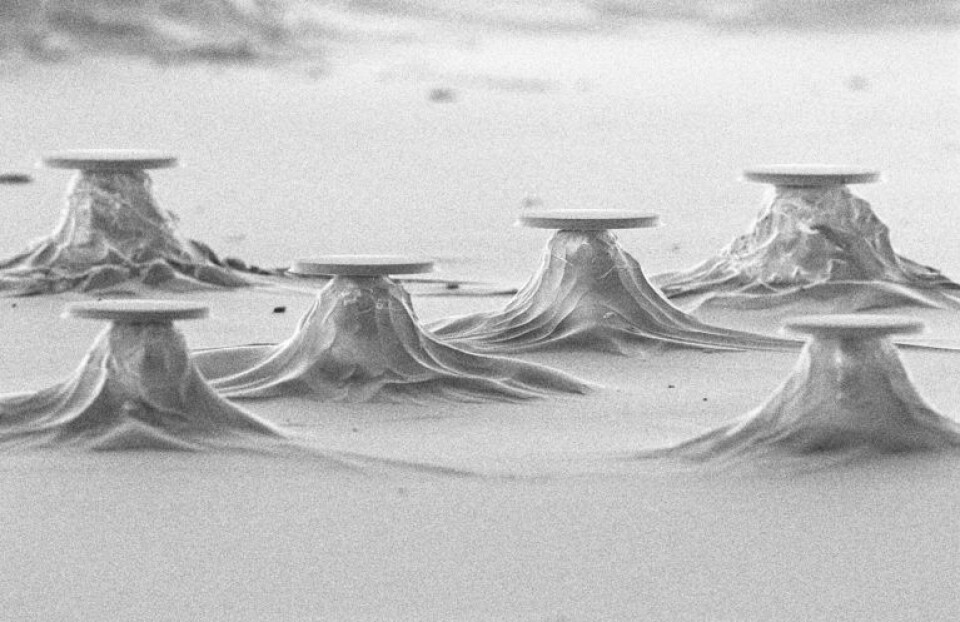THIS ARTICLE/PRESS RELEASE IS PAID FOR AND PRESENTED BY NTNU Norwegian University of Science and Technology - read more

Influenza or a cold? New technology can help you answer this
Smart gadgets in your home might soon be able to tell you what’s wrong with you. But the technology is good news for a lot of other things too.
Some people do such smart and difficult things that it’s hard to see what in the world they might have to do with you and me, so we just shrug them off. But that’s often the wrong response.
What if you had a simple gadget at home that could tell you why you’re feeling so lousy?
What if this gadget could quickly check whether you have Covid or the flu – or maybe it would even pick up that you have diabetes without knowing it?
The device could figure all this out without you having to go to a doctor or a laboratory.
A type of optical cavity
This gadget could become a reality within a few years, and electrical engineers are some of people who make it possible to create them.
Such gadgets contain a key component called the 'whispering gallery mode microresonator'.
Microresonators, which are a type of optical cavity, can store optical fields inside a very small volume. They can be made in a race track or disk geometry, but they usually are microscale in size, similar to the thickness of a hair. Light travels inside the microresonator in circles, so the optical field gets amplified.
“We can compare the microresonator to what happens with the sound in the whispering gallery in St. Paul’s Cathedral in London,” says Ren.
This elliptical gallery has produced a famous phenomenon. You can whisper at one end of it and people at the other end of the room can hear you, even though they wouldn’t normally be to able hear you at that distance.

Light waves are amplified
The sound waves are amplified by the shape of the room and the walls, which is how light waves behave in the microresonator.
New technology is providing better optical sensors, which are important for electronics, including devices that analyse chemicals using light.
“We’ve built the lowest loss whispering gallery mode microresonator out there for the longwave infrared spectrum," Dingding Ren, a researcher at NTNU's Department of Electronic Systems, says.
Because the longwave infrared spectrum provides definitive information about chemicals, it provides new possibility for sensing applications.
Stores the light better
Ren and his colleagues have developed a new whispering gallery mode microresonator – which can store light for certain wavelengths much longer in the resonance.
“Our microresonator is about 100 times better than what was available before for the longwave infrared spectrum," Ren says.
It can retain the light 100 times longer than previous versions, which amplifies the optical field inside and makes nonlinear processes much easier.
Ren and his colleagues have contributed to developing a whole set of nanofabrication processes to make the microresonators. Their results were recently presented in Nature Communications.

Opens up great opportunities
Storing light waves in the infrared part of the light spectrum more effectively is good news for several types of new technologies, especially for particle sensing and spectroscopic chemical identification, which analyse a gas or fluid sample to check for viruses and bacteria and other nasties you might have.
The new microresonator means that scientists can develop broadband frequency combs in the longwave infrared spectrum using these devices. And just what might those be?
Frequency combs are laser lights whose spectrum consists of a series of discrete, equally spaced frequency lines. These can be found various places, such as in your GPS, in atomic clocks and in fibre optic equipment used in telephones and computers.
The technology also opens the door to analysing several chemicals at once, if a broadband frequency comb is available at the longwave infrared spectrum.
Technology in its initial stage
“The technology is still in its initial stage when it comes to measurements in the longwave infrared spectrum of light. But our improvement gives us the possibility to identify several different chemicals in real time in the near future,” Ren says.
This kind of spectroscopic machine already exists, but they are so big and so expensive that only hospitals and big budget institutions can afford them. Other, slightly simpler machines might be able to analyse a few chemicals, but not many at once – unlike what the new technology could make possible.
Dingding Ren has worked closely with Professor David Burghoff and his colleagues at the University of Notre Dame in the USA.
“The competition in this field is fierce,” says Ren.
The new microresonator is made using the element germanium. The material may sound exotic, but it was used in the world’s first transistor as early as 1947, before silicon took over that market.
Today, germanium is frequently used in optical lenses in sensors and infrared cameras, and it is consequently neither particularly rare nor expensive. These are also advantages when theory is going to be brought to the market.
Reference:
Ren et al., High-quality microresonators in the longwave infrared based on native germanium, Nature Communications, vol. 13, 2022. DOI: 10.1038/s41467-022-32706-1
Read more content from NTNU:
-
Forever chemicals affect ducklings' genes while they are still in the egg
-
Why are pregnant women in Norway so worried?
-
Politics on Facebook: Populist parties choose divisive issues on purpose
-
Social media is connected to cyberbullying – but not how we thought
-
Forskere ved NTNU får nesten 24 millioner av EU for å lage nye strømomformere
-
This helps the youngest children enjoy school more





































